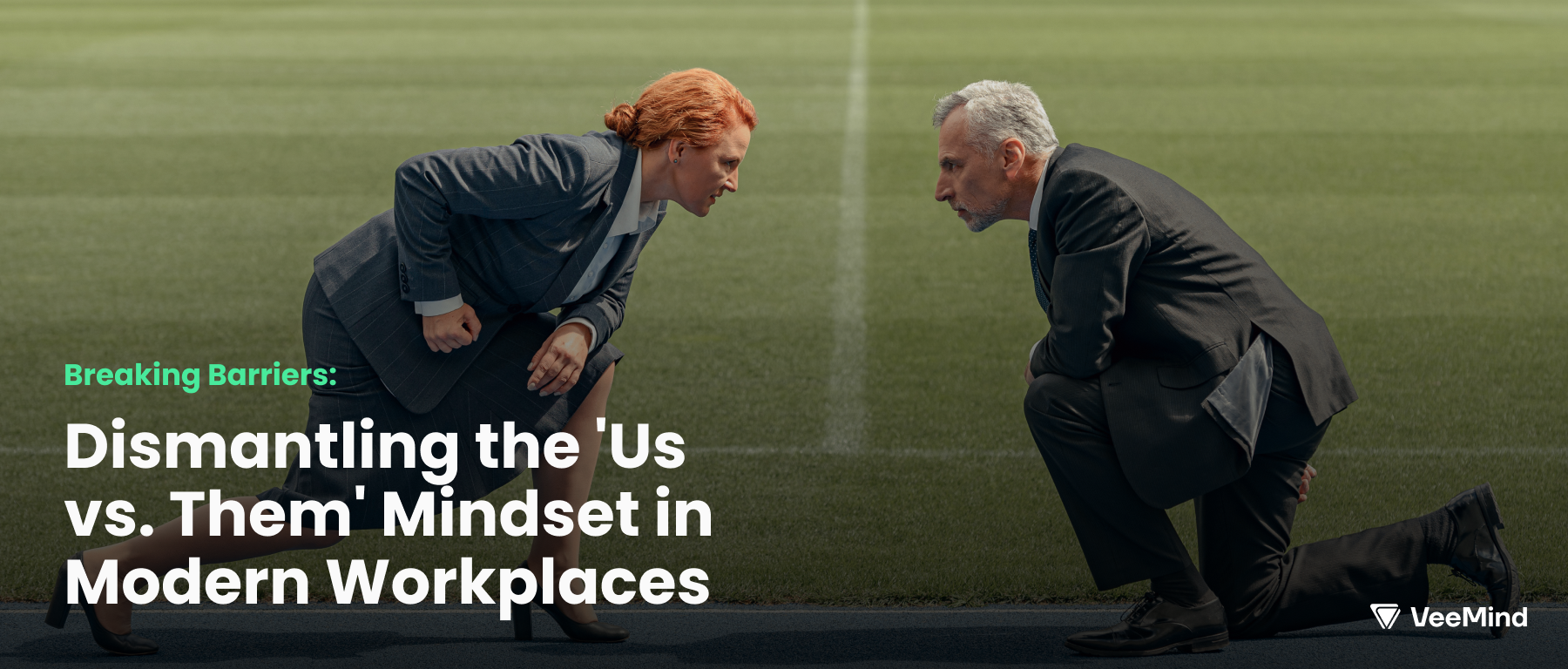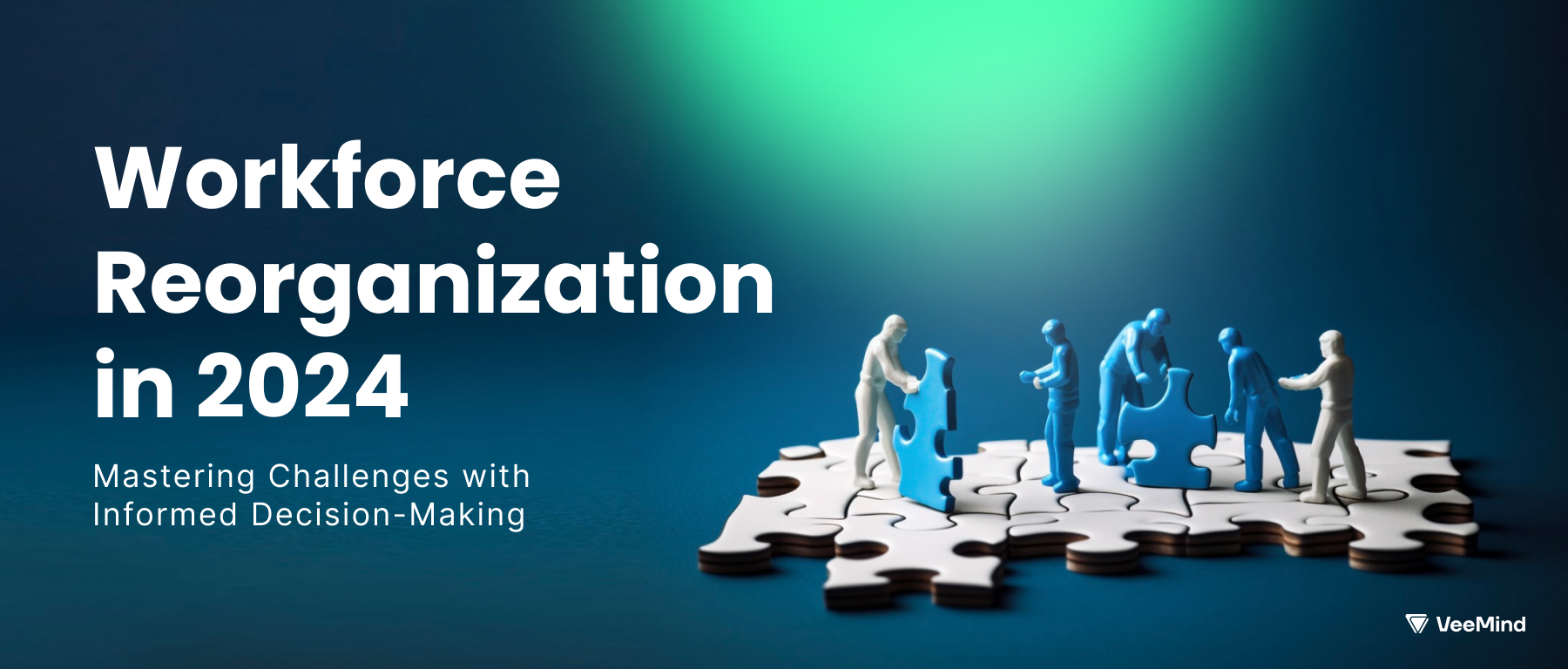Breaking Barriers: Dismantling the 'Us vs. Them' Mindset in Modern Workplaces

In the complex landscape of modern organizations, a concerning phenomenon often goes unnoticed, yet it has the potential to undermine productivity, innovation, and overall success. We’re talking about the pervasive “Us vs. Them” mentality that plagues many companies, leading to divisions and animosities that hinder collaboration and growth. It’s not just about the obvious divides like politics, race, or gender, but a range of unspoken biases and oppositions that erode the fabric of a cohesive workforce.
From “Management vs The Rest” to the worrisome “Doers and Thinkers,” these divisions can be insidious, and their implications go beyond surface-level disagreements.
This mindset builds invisible walls within organizations, separating teams, departments, and even management from staff. It’s a phenomenon that can erode trust, hinder productivity, and decrease the collective potential. But is there a way to bridge this divide, creating a more united, transparent, and efficient work environment?
The “Us vs. Them” mentality in companies often appears from a cocktail of structural, cultural, and interpersonal dynamics. At its core, this divisive mindset can be traced back to strict hierarchical structures, inadequate communication, and a climate that prioritizes competition over collaboration. Add to this the complexities of differing cultural values in multinational settings, uneven resource allocation, leadership styles that don’t promote inclusivity, and the physical separation of teams, and you have a fertile ground for misunderstandings and feelings of division. Stereotyping specific roles or departments and poorly managed change can further exacerbate this sentiment. For businesses to thrive, it’s imperative to bridge these divides by fostering transparent communication, promoting collaboration, and nurturing a culture of mutual respect.
In this exploration of the “Us vs. Them” dynamic, the insights of our esteemed co-contributors, Jon Antonucci and Dr. Martin Bethke, add invaluable depth to the discourse.
Meet Jon Antonucci, a seasoned leadership development expert with over two decades of experience in diverse organizational settings. As the Founder of SML (ServantMindedLeadership) Consultive, he has an extensive background in coaching, mentoring, and employee training.
Jon’s passion lies in nurturing leaders who embody a love-based, servant-leadership philosophy. His journey, marked by overcoming challenges and refining character, empowers him to inspire others to drive transformation through empathy and collaboration. Jon’s unique perspective is instrumental in understanding and dismantling the “Us vs. Them” mentality that can plague organizations, offering practical solutions to foster unity and open communication.
Despite a general disdain for middle management (any leader not at a level of VP or above) the reality is that they are the backbone of the organization. Just as the spine keeps a body upright, so is the responsibility of middle management. Unfortunately, due largely to the general disrespect they feel on a daily basis, it seems that in every company there is at least one middle-manager or front-line leader who has adopted the “us-vs.-them” mentality. In an effort to win some level of respect (even if only in their own mind), they feel like they must “choose a side”. Their (perceived) options?
- Option 1: Become a “Company Person” – This individual throws their lot in with the executive team and is simply in pursuit of sitting in the c-suite offices themselves. Their middle-management role is merely a stop on the way to the top.
- Option 2: Become a “Person of the people” – This manager positions themselves as the champion of the employees. They regal the office with tales of their fight against the upper echelon of leadership as they defend their team and vie for satisfaction!
Regardless of which option is selected, the person who adopts the us-vs.-them strategy is cancerous to the organization.
One might say, “But Jon, how can that be? Don’t both of these perspectives have value? Isn’t the second person leading with courage while the first is leading with vision?”
Those arguments could be made and, if the above options were the same man or woman, I MIGHT even agree. But, the problem is that they are NOT both, they are one or the other.
Medically, cancer is not an external attack on the body. Unlike the cold, flu, or any number of other ailments, cancer is not an outside attack. Rather, it is the body attacking itself. When anyone in an organization adopts the us-vs.-them approach, is will result in the organization attacking itself…and THAT is organizational cancer. As the old saying goes, “A(n organization) divided against itself cannot stand!”
Many companies, churches, non-profits, etc. have allowed this cancer to spread and they cannot figure out why both their efficiency and internal satisfaction has declined. They don’t realize that they are being attacked from the inside! The good news is that there is a cure! It is not required that the cancer remains!
The cure is a cultural shift in the way that we think about front-line and middle leadership. They are not a necessary evil. They are an integral part of the organization. This means that we need to invest in their success, and provide them with the tools that are needed for them to effective engage with their team by BOTH inspiring the execution of organizational vision as well as genuinely caring about those they lead (serve). This will result in the organization functioning in harmony instead of with a spirit of division.

Introducing Dr. Martin Bethke, a leader in the fields of strategy consulting, purpose-driven communication, and sustainable business transformation. As a former C-Suite executive at WWF, he understands the intricacies of the corporate landscape from an insider’s perspective.
Martin’s background, combined with his commitment to sustainability and innovative strategies, offers a bird’s-eye view of the complex dynamics within large corporations. This perspective is invaluable when discussing the “Us vs. Them” mentality. Through his leadership roles, he has witnessed firsthand how silos can form, and more importantly, how they can be dismantled to create more cohesive, forward-thinking organizations.
In the evolving realm of leadership, a notable challenge gaining traction is the “Us vs. Them” mentality. This psychological division frequently occurs when a manager attempts to uphold popularity by aligning with the team members, even at the cost of distancing from the company’s contentious decisions. The implications of this division can be far-reaching and detrimental to both business growth and sustainability. And it is especially destructive, when a company is under pressure and the cooperation of all hierarchical levels and all employees is crucial for the future of the company.
Firstly, let’s acknowledge the risks. This segregation can lead to reduced cooperation, increased conflict, and a fractured organizational culture. Such conditions not only inhibit innovation but also impede trust, transparency, and shared understanding—essential elements for maintaining a thriving business. The long-term consequences? It can stifle growth. With an “Us vs. Them” mentality, cross-department collaboration diminishes, leading to the stagnation of ideas. Reduced transparency can foster distrust, in turn harming employee morale and engagement, which are critical drivers of productivity and innovation.
So how should leaders counteract this? One solution lies in practicing ‘Transformational Leadership’. This approach focuses on inspiring employees, fostering trust, creating psychological safety and promoting a shared vision. By aligning everyone to common organizational goals rather than individual factions, leaders can break down the “Us vs. Them” divide. Further, communication is key. Leaders should strive for open, transparent communication to mitigate misunderstandings and misconceptions. This allows employees to comprehend the reasons behind company decisions, reducing the feeling of exclusion. Regular team-building activities can also foster a sense of unity, further bridging this divide. The role of leadership in creating a harmonious work environment cannot be overstated. As a leader, creating an environment where every team member feels valued and connected is paramount. This requires acknowledging contributions, encouraging inclusivity, and promoting a culture of mutual respect and collaboration.
Additionally, HR professionals play a crucial role in this. They should guide leaders to balance their popularity with responsibility, provide training to encourage a unified vision, and develop an inclusive culture that values diversity of thought. By doing so, HR can be a driving force in eliminating the “Us vs. Them” mentality.
By promoting transformational leadership, fostering transparent communication, encouraging inclusivity, and fostering unity, organizations can mitigate these divisions. Thus they can leverage the power of leadership and HR to create harmonious work environments that are conducive to growth and success.
How can VeeMind help to dismantle these barriers?
The hidden specter of the “Us vs. Them” mentality poses a genuine challenge, often crippling an organization’s inherent potential. When this mindset manifests, what follows are communication barriers, stifled innovation, and hindered growth.
VeeMind created a leadership development program which is tailored to dismantle such divisive mindsets, starting with nurturing self-aware leaders to become deeply attuned to their biases, ensuring they don’t unwittingly foster division. The program champions open dialogue, effectively bridging the gap between teams, departments, or hierarchical levels. By instilling a profound sense of empathy, it crafts leaders who not only understand but truly appreciate the myriad challenges and perspectives within their teams.


